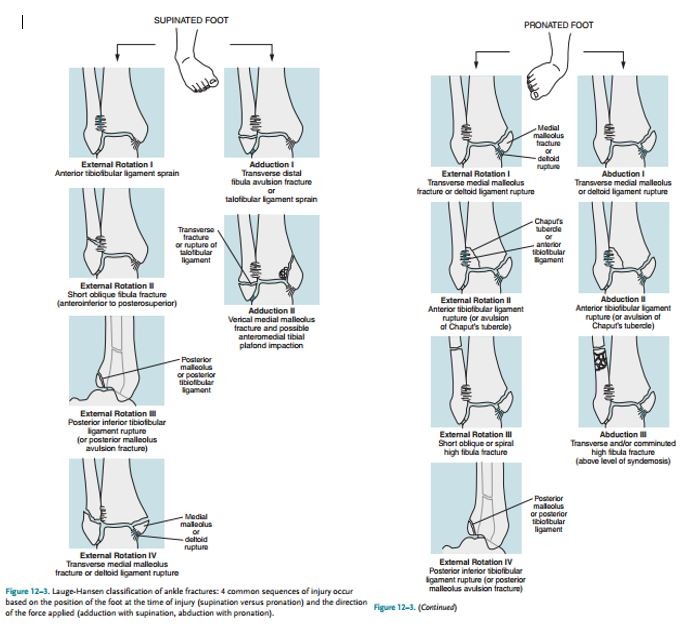
The Lauge-Hansen classification system is a widely used method for describing and categorizing different types of ankle fractures based on the mechanism of injury. It was developed by Danish orthopaedic surgeon Lauge-Hansen in the mid-20th century.
This classification system takes into account two main factors: the position of the foot at the time of injury (pronation or supination) and the direction of the force applied (medial or lateral).
The Lauge-Hansen classification system consists of four main fracture patterns:
- Supination-Adduction (SA) injuries: These occur when the foot is in a supinated (turned inward) position and a force is applied in an adduction (inward) direction. This typically results in a fracture of the lateral malleolus (fibula) and possible rupture of the deltoid ligament on the medial side of the ankle.
- Supination-External Rotation (SER) injuries: These occur when the foot is in a supinated position and a force is applied in an external rotation (outward) direction. This can result in a fracture of the fibula, followed by a rupture of the anterior talofibular ligament and the calcaneofibular ligament.
- Pronation-Abduction (PA) injuries: These occur when the foot is in a pronated (turned outward) position and a force is applied in an abduction (outward) direction. This can lead to a fracture of the medial malleolus (tibia) and possible rupture of the lateral ligaments.
- Pronation-External Rotation (PER) injuries: These occur when the foot is in a pronated position and a force is applied in an external rotation direction. This can result in a fracture of the medial malleolus, followed by rupture of the deltoid ligament and the syndesmosis (the ligaments that hold the tibia and fibula together).
The Lauge-Hansen classification system helps surgeons and medical professionals better understand the specific patterns of ankle fractures, which can guide treatment decisions and surgical approaches.
